Can Dogs Eat Mushrooms? A Complete Guide to Mushroom Safety for Your Canine
Understanding Mushrooms and Dogs: The Basics
The question "Can dogs eat mushrooms?" doesn't have a simple yes or no answer. Mushrooms represent an incredibly diverse food group with thousands of species ranging from perfectly safe to deadly toxic. This diversity makes mushrooms a complicated topic when it comes to canine consumption. As responsible pet owners, understanding which mushrooms are safe, which are dangerous, and how to handle potential mushroom ingestion can be critical knowledge for your dog's safety.
Dogs are naturally curious creatures that explore the world with their mouths, making them particularly vulnerable to accidental mushroom consumption, especially during walks or outdoor activities. While certain store-bought mushrooms are generally safe for dogs in moderation, wild mushrooms present a significant risk that should never be overlooked.
This comprehensive guide will explore everything dog owners need to know about mushrooms and their canine companions, from identifying safe varieties to recognizing symptoms of mushroom poisoning and understanding proper emergency response protocols.

Safe vs. Toxic: The Critical Distinction
The fundamental challenge with mushrooms and dogs centers on the vast difference between safe and toxic varieties:
-
Safe mushrooms: Certain commercially grown mushrooms found in grocery stores are non-toxic to dogs when properly prepared and given in moderation.
-
Toxic mushrooms: Many wild mushroom species contain compounds that can cause effects ranging from mild gastrointestinal upset to severe organ failure and death in dogs.
-
Identification challenges: Even experienced mycologists (mushroom experts) sometimes struggle to distinguish between safe and toxic wild mushroom species, making it virtually impossible for the average dog owner to make this determination.
-
Geographic variability: The types of mushrooms growing in your area depend on your region, climate, and season, creating additional complexity in identification.
-
Risk assessment: Given the potential severity of mushroom poisoning and the difficulty in identification, most veterinarians recommend a "better safe than sorry" approach—treating all wild mushrooms as potentially dangerous to dogs.
This stark contrast between relatively safe store-bought varieties and potentially deadly wild mushrooms forms the foundation for all advice regarding dogs and mushroom consumption.
Store-Bought Mushrooms: Which Ones Are Safe for Dogs?
Common Safe Mushroom Varieties
Certain commercially cultivated mushrooms are generally considered non-toxic to dogs when properly prepared:
-
Button mushrooms (Agaricus bisporus): The most common mushroom sold in grocery stores, also known as white mushrooms or champignon mushrooms. These are generally safe for dogs in small amounts when cooked.
-
Cremini mushrooms: These are actually the same species as button mushrooms (Agaricus bisporus) but at a different growth stage. They're also known as baby bella mushrooms and are typically safe for dogs in moderation.
-
Portobello mushrooms: These are mature cremini mushrooms (still Agaricus bisporus) and are generally safe for dogs when cooked and served plain.
-
Shiitake mushrooms (Lentinula edodes): These popular Asian mushrooms are generally considered safe for dogs in small, cooked portions without seasoning.
-
Maitake mushrooms (Grifola frondosa): Also known as hen-of-the-woods, these can be safe for dogs in small amounts when thoroughly cooked.
-
Oyster mushrooms (Pleurotus species): These are typically safe when cooked and given in moderation.
It's important to note that while these mushrooms are generally considered safe, individual dogs may have different reactions, and any new food should be introduced gradually while monitoring for adverse effects.
Preparation Guidelines for Safe Consumption
If you choose to offer your dog small amounts of safe, store-bought mushrooms, follow these important preparation guidelines:
-
Always cook thoroughly: Never feed raw mushrooms to dogs. Cooking breaks down the tough cell walls, making mushrooms more digestible and eliminating potentially harmful compounds.
-
Avoid seasonings: Prepare mushrooms plain without any oils, butter, salt, garlic, onions, or spices, as many common cooking ingredients are harmful to dogs.
-
Start with tiny portions: When introducing mushrooms, begin with a very small amount (a small piece for small dogs, a few pieces for larger dogs) to monitor for any adverse reactions.
-
Proper cleaning: Wash mushrooms thoroughly to remove any dirt, debris, or potential chemical residues.
-
Simple preparation methods: Steaming or boiling are preferred cooking methods, avoiding frying or sautéing which add unnecessary fats.
-
Cut into appropriate sizes: Slice or chop mushrooms into small, manageable pieces to prevent choking hazards, especially for smaller dogs.
-
Serve at room temperature: Allow cooked mushrooms to cool completely before offering them to your dog.
Even with safe varieties, mushrooms should be considered an occasional treat rather than a regular part of your dog's diet.
Wild Mushrooms: A Serious Danger to Dogs
Why Wild Mushrooms Pose a Significant Risk
Wild mushrooms present substantial dangers to dogs for several critical reasons:
-
Deadly toxicity: Some wild mushroom species contain toxins that can cause fatal liver or kidney failure, even in small amounts.
-
Rapid absorption: Toxic compounds in mushrooms can be absorbed quickly once ingested, making prompt treatment essential.
-
Identification difficulties: Even experts with decades of experience sometimes have difficulty distinguishing between toxic and non-toxic mushroom species.
-
Attractive qualities: Many toxic mushrooms have an appealing smell or taste to dogs, increasing the likelihood of consumption.
-
Seasonal changes: Mushrooms can appear suddenly after rainfall and grow rapidly, creating dangers that weren't present during your previous yard inspection.
-
Deceptive appearance: Some of the most dangerous mushroom species appear quite ordinary and non-threatening, lacking obvious warning characteristics.
-
Variable toxicity: The toxicity of some mushroom species can vary based on growing conditions, maturity stage, and the part of the mushroom consumed.
Due to these significant risks, veterinary experts universally recommend preventing dogs from consuming any wild mushrooms, regardless of appearance.
Most Dangerous Wild Mushrooms for Dogs
Several mushroom groups are particularly dangerous to dogs and have been responsible for severe poisonings and fatalities:
-
Amanita species: Including the death cap (Amanita phalloides) and destroying angel (Amanita bisporigera and relatives), these contain amatoxins that cause severe liver failure. As little as a small bite can be fatal to a dog.
-
Galerina species: These small brown mushrooms contain the same deadly amatoxins as Amanita species and are equally dangerous.
-
Gyromitra species: Including false morels, these contain gyromitrin, which can cause seizures, liver damage, and death.
-
Inocybe and Clitocybe species: These contain muscarine, which affects the nervous system and can cause severe gastrointestinal and respiratory issues.
-
Psilocybe species: Known as "magic mushrooms," these contain psilocybin, which can cause hallucinations, disorientation, and abnormal behavior in dogs, potentially leading to dangerous situations.
-
Helvella species: These can contain monomethylhydrazine compounds that are particularly toxic to dogs.
-
Little brown mushrooms (LBMs): This informal category includes numerous small brown mushroom species that are difficult to identify and may be extremely toxic.
The consequences of consuming these mushrooms can range from uncomfortable to fatal for dogs, with treatment outcomes often dependent on how quickly veterinary care is sought.
Signs of Mushroom Poisoning in Dogs
Common Symptoms to Watch For
Recognizing the signs of mushroom poisoning in dogs can be lifesaving. Symptoms may vary based on the type of mushroom consumed, the amount ingested, and the dog's size and overall health. Common symptoms include:
-
Gastrointestinal distress: Vomiting, diarrhea, abdominal pain, and excessive drooling often occur within 15 minutes to several hours after ingestion.
-
Neurological signs: Disorientation, ataxia (uncoordinated movements), excessive vocalization, depression, seizures, or hallucination-like behavior.
-
Liver failure indicators: Jaundice (yellowing of the gums, whites of eyes, or skin), excessive tiredness, and increased thirst and urination may develop 6-12 hours after ingestion of certain toxic mushrooms.
-
Kidney failure signs: Decreased or absent urination, blood in urine, lethargy, and loss of appetite.
-
Cardiovascular symptoms: Decreased or increased heart rate, cardiac arrhythmias, and weakness.
-
Respiratory issues: Difficulty breathing, increased respiratory rate, or abnormal breathing patterns.
-
Unusual behavior: Sensitivity to touch or sound, aggression, disorientation, or other personality changes.
-
Visual disturbances: Dilated pupils, abnormal eye movements, or apparent visual hallucinations.
The timeframe for symptom development is important to note, as some toxic mushrooms cause immediate symptoms while others may not cause visible effects until liver or kidney damage has already occurred.
Delayed Toxicity: A Silent Danger
One of the most insidious aspects of certain mushroom poisonings is delayed toxicity:
-
False recovery period: With Amanita and other hepatotoxic mushrooms, dogs may appear to recover after initial gastrointestinal symptoms subside, giving a false sense of security.
-
Delayed onset of severe symptoms: The most serious effects on the liver may not become apparent for 12-24 hours or even longer after ingestion.
-
Progressive deterioration: Once liver damage begins, the condition can deteriorate rapidly without immediate treatment.
-
Cumulative damage: Some mushroom toxins cause progressive damage that worsens over time, even after the mushroom has been digested and eliminated.
-
Subtle early indicators: Early signs of serious toxicity may be subtle and easily overlooked, such as slightly increased thirst or mild lethargy.
This delayed toxicity pattern makes it critical to seek veterinary care immediately after known or suspected mushroom ingestion, rather than waiting for severe symptoms to develop.

Emergency Response to Mushroom Ingestion
Immediate Steps to Take
If you suspect your dog has eaten a wild mushroom or is showing symptoms of mushroom poisoning, time is of the essence:
-
Remove remaining mushrooms: If possible, prevent your dog from consuming more mushrooms, but do not put yourself at risk if your dog is aggressive.
-
Collect a sample: If it can be done safely, collect any remaining mushrooms in a paper (not plastic) bag for identification. Take clear photos of the mushrooms in their growing location if possible.
-
Contact your veterinarian immediately: Call your regular vet during business hours or an emergency vet clinic after hours. Do not wait for symptoms to appear or worsen.
-
Call animal poison control: The ASPCA Animal Poison Control Center (1-888-426-4435) or Pet Poison Helpline (1-855-764-7661) can provide guidance (note that fees may apply).
-
Do not induce vomiting: Unless specifically instructed to do so by a veterinarian or poison control specialist, do not attempt to make your dog vomit.
-
Note the timeline: Record when you think ingestion occurred and when symptoms first appeared, as this information can be valuable for treatment.
-
Monitor vital signs: If possible, monitor your dog's gum color, breathing rate, and pulse while seeking veterinary care.
-
Bring appropriate items: When heading to the vet, bring the mushroom sample (if collected), any vomit containing mushroom pieces, and information about your dog's symptoms and timeline.
Prompt action can significantly improve outcomes in cases of mushroom poisoning.
Veterinary Treatment Approaches
Veterinary treatment for mushroom poisoning typically includes:
-
Decontamination: If the ingestion was recent, the vet may induce vomiting and administer activated charcoal to bind toxins in the digestive tract.
-
Supportive care: Intravenous fluids to maintain hydration and support kidney function, medications to control vomiting and diarrhea, and nutritional support.
-
Specific antidotes: In cases of certain mushroom toxins, specific medications like silibinin (for amatoxin poisoning) may be administered.
-
Monitoring liver and kidney function: Blood tests will be performed to assess organ function and adjust treatment accordingly.
-
Neurological support: Anti-seizure medications and other neurological support may be provided if the mushroom has affected the nervous system.
-
Extended hospitalization: Depending on the severity, your dog may require several days of intensive care and monitoring.
-
Follow-up care: After discharge, follow-up appointments will likely be necessary to monitor recovery and organ function.
The prognosis depends on the type of mushroom consumed, the amount ingested, how quickly treatment was sought, and the dog's overall health status.
Preventing Mushroom Exposure
Yard and Walking Route Safety
Proactive prevention is the best approach to protecting your dog from mushroom poisoning:
-
Regular yard inspections: Check your yard daily, especially after rainfall, and remove any mushrooms immediately. Dispose of them where your dog cannot access them.
-
Proper disposal: Wear gloves when removing mushrooms and dispose of them in a secure trash container outside your home.
-
Address underlying conditions: Mushrooms often grow on decaying wood or in areas with organic matter. Remove dead tree stumps, old mulch, or other materials that encourage mushroom growth.
-
Create mushroom-free zones: In areas where your dog spends unsupervised time, maintain conditions that discourage mushroom growth by ensuring good drainage and sunlight.
-
Walking awareness: During walks, keep your dog on a leash and steer them away from areas where mushrooms are growing. Be especially vigilant in wooded areas, parks, and after rainy weather.
-
Seasonal vigilance: Be particularly careful during spring and fall when mushroom growth is typically most abundant.
-
Professional help: Consider consulting with a lawn care professional about environmentally safe treatments that discourage fungal growth.
Regular vigilance is essential, as mushrooms can appear overnight, especially in favorable growing conditions.
Training and Supervision
Training your dog to avoid mushrooms can provide an additional layer of protection:
-
"Leave it" command: Train your dog to respond reliably to a "leave it" command that will prevent them from picking up or eating items they encounter.
-
Supervised outdoor time: Whenever possible, supervise your dog while outdoors, especially in areas where mushrooms are likely to grow.
-
Positive reinforcement: Reward your dog for ignoring or avoiding mushrooms during walks, reinforcing that these are not items to be investigated or consumed.
-
Consistent correction: Gently but firmly correct any attempts to sniff or eat mushrooms or unknown objects outdoors.
-
Basket muzzle option: For dogs with a history of eating inappropriate items, a basket muzzle during walks can prevent ingestion while still allowing drinking, panting, and comfortable breathing.
-
Engaging alternatives: Provide appropriate toys and activities during outdoor time to keep your dog engaged and less interested in exploring potentially dangerous items.
-
Recall training: A strong, reliable recall command can help you quickly remove your dog from an area where you spot mushrooms.
These preventative measures significantly reduce the risk of accidental mushroom consumption.
Nutritional Considerations for Safe Mushrooms
Potential Benefits of Mushrooms for Dogs
When considering the occasional inclusion of safe, store-bought mushrooms in your dog's diet, there are some potential nutritional benefits:
-
Low-calorie: Mushrooms are generally low in calories, making them a potential healthy treat option for dogs on weight management programs.
-
Dietary fiber: Mushrooms contain dietary fiber that may support digestive health when given in appropriate amounts.
-
Protein content: Though not a primary protein source, mushrooms do contain some protein with a complementary amino acid profile.
-
Vitamins: Various mushrooms contain B vitamins, including riboflavin, niacin, and pantothenic acid, which support energy metabolism.
-
Minerals: Mushrooms can provide minerals like selenium, copper, and potassium, which play roles in various bodily functions.
-
Antioxidant compounds: Certain mushrooms contain antioxidants that may help combat oxidative stress.
-
Immune-modulating properties: Some research suggests certain mushroom varieties may have immune-modulating effects, though more research is needed specifically for dogs.
Despite these potential benefits, it's important to remember that mushrooms should only constitute a very small part of a dog's diet, if included at all.
Appropriate Serving Sizes
If you choose to occasionally offer safe, cooked mushrooms to your dog, appropriate portion control is essential:
-
Tiny dogs (under 10 lbs): No more than 1-2 small pieces (about the size of a pea)
-
Small dogs (10-25 lbs): No more than 1 teaspoon of chopped, cooked mushrooms
-
Medium dogs (25-50 lbs): No more than 1 tablespoon of chopped, cooked mushrooms
-
Large dogs (50-90 lbs): No more than 2 tablespoons of chopped, cooked mushrooms
-
Giant breeds (over 90 lbs): No more than 3 tablespoons of chopped, cooked mushrooms
-
Frequency guidelines: No more than once or twice a week as an occasional treat
-
Treat rule: Follow the 10% rule—all treats combined, including mushrooms, should make up no more than 10% of your dog's daily caloric intake
Always introduce any new food gradually and monitor for any adverse reactions, even with foods generally considered safe.
Medicinal Mushrooms and Dogs
The Growing Trend of Mushroom Supplements
In recent years, there has been increased interest in medicinal mushroom supplements for dogs:
-
Commercial availability: Many pet supplement companies now offer products containing medicinal mushrooms specifically formulated for dogs.
-
Common medicinal varieties: Reishi, turkey tail, shiitake, maitake, and lion's mane are among the most common mushroom varieties included in dog supplements.
-
Purported benefits: These supplements are marketed for immune support, cancer complementary care, cognitive function, anti-inflammatory properties, and general wellness.
-
Forms available: Supplements come as powders, capsules, liquid extracts, and chews specifically designed for canine consumption.
-
Extraction processes: Most medicinal mushroom supplements undergo specialized extraction processes to make their beneficial compounds bioavailable.
-
Veterinary integration: Some holistic and integrative veterinarians have begun incorporating medicinal mushroom therapy into their treatment protocols.
-
Research status: While human research on medicinal mushrooms is growing, canine-specific research remains more limited, though it is an expanding field.
This trend represents an interesting development in canine nutrition and supplementation, though it should be approached with appropriate caution.
Veterinary Guidance Essential
Before considering medicinal mushroom supplements for your dog:
-
Consult your veterinarian: Always discuss any supplements with your veterinarian before adding them to your dog's routine.
-
Quality matters: If your vet approves a mushroom supplement, choose products specifically formulated for dogs from reputable companies that conduct quality testing.
-
Potential interactions: Be aware that some mushroom supplements may interact with medications or affect certain health conditions.
-
Appropriate dosing: Follow veterinary guidance on proper dosing, as this may differ from package recommendations based on your dog's specific health status.
-
Monitor for reactions: Carefully observe your dog for any adverse reactions when starting a new supplement, even if it's marketed as natural.
-
Evidence-based approach: Work with your veterinarian to set realistic expectations based on available evidence rather than marketing claims.
-
Integrated approach: Consider mushroom supplements as part of a comprehensive health plan rather than a standalone solution for health concerns.
The field of medicinal mushrooms for dogs is still evolving, making professional guidance particularly important in this area.
Frequently Asked Questions About Dogs and Mushrooms
Common Concerns Addressed
Here are answers to some frequently asked questions about dogs and mushrooms:
-
What should I do if my dog ate a mushroom but seems fine? Seek veterinary care immediately even if your dog shows no symptoms. Some of the most dangerous mushroom toxins have delayed effects, and early treatment significantly improves outcomes.
-
Are mushrooms in my lawn automatically dangerous? While not all lawn mushrooms are toxic, it's impossible to safely identify mushroom species without expert knowledge. The safest approach is to remove all mushrooms from areas your dog can access.
-
Can cooking make toxic mushrooms safe for dogs? No. Cooking will not neutralize the dangerous toxins in poisonous mushrooms. Never feed wild mushrooms to your dog, regardless of preparation method.
-
Is mushroom poisoning in dogs common? While not among the most common toxicities, mushroom poisoning cases do occur regularly, especially during rainy seasons when mushroom growth increases.
-
Are some dogs more likely to eat mushrooms than others? Yes. Puppies, dogs with indiscriminate eating habits (like Labradors), and dogs with certain behavioral issues may be more likely to consume mushrooms and other potentially harmful items.
-
Can the mushrooms on store-bought pizza or in sauces harm my dog? The mushrooms themselves are likely safe varieties, but the other ingredients in these human foods (garlic, onions, high fat, salt, etc.) can be harmful to dogs, so these items should still be avoided.
-
Are dried mushrooms safer than fresh ones? No. Drying does not eliminate toxins from poisonous mushrooms. Additionally, the concentrated nature of dried mushrooms can actually make toxins more potent by weight.
Understanding these common concerns can help guide responsible decision-making regarding dogs and mushrooms.
Conclusion: Balancing Safety and Nutrition
When it comes to dogs and mushrooms, safety should always be the primary consideration. The potential dangers of toxic mushrooms far outweigh any nutritional benefits that might come from including even safe mushroom varieties in your dog's diet.
The key takeaways from this guide include:
-
Err on the side of caution: All wild mushrooms should be considered potentially dangerous to your dog.
-
Prevention is critical: Regular yard checks, careful supervision during walks, and training your dog to avoid unknown objects are your best defenses against mushroom poisoning.
-
Prompt action saves lives: If mushroom ingestion occurs or is suspected, immediate veterinary care is essential, even if your dog isn't yet showing symptoms.
-
Safe options exist: If you want to include mushrooms in your dog's diet, stick to thoroughly cooked, plain store-bought varieties known to be safe, and introduce them gradually in small amounts.
-
Supplements require guidance: Medicinal mushroom supplements should only be used under veterinary supervision and sourced from reputable companies.
-
Individual variables matter: Each dog is unique, and even generally safe foods can cause adverse reactions in some individuals.
-
Balanced perspective: While the risks of wild mushrooms are significant, properly prepared store-bought mushrooms can be a safe occasional treat for most dogs when given in appropriate amounts.
By staying informed, vigilant, and working closely with your veterinarian, you can make the best decisions regarding mushrooms and your canine companion's health and safety.

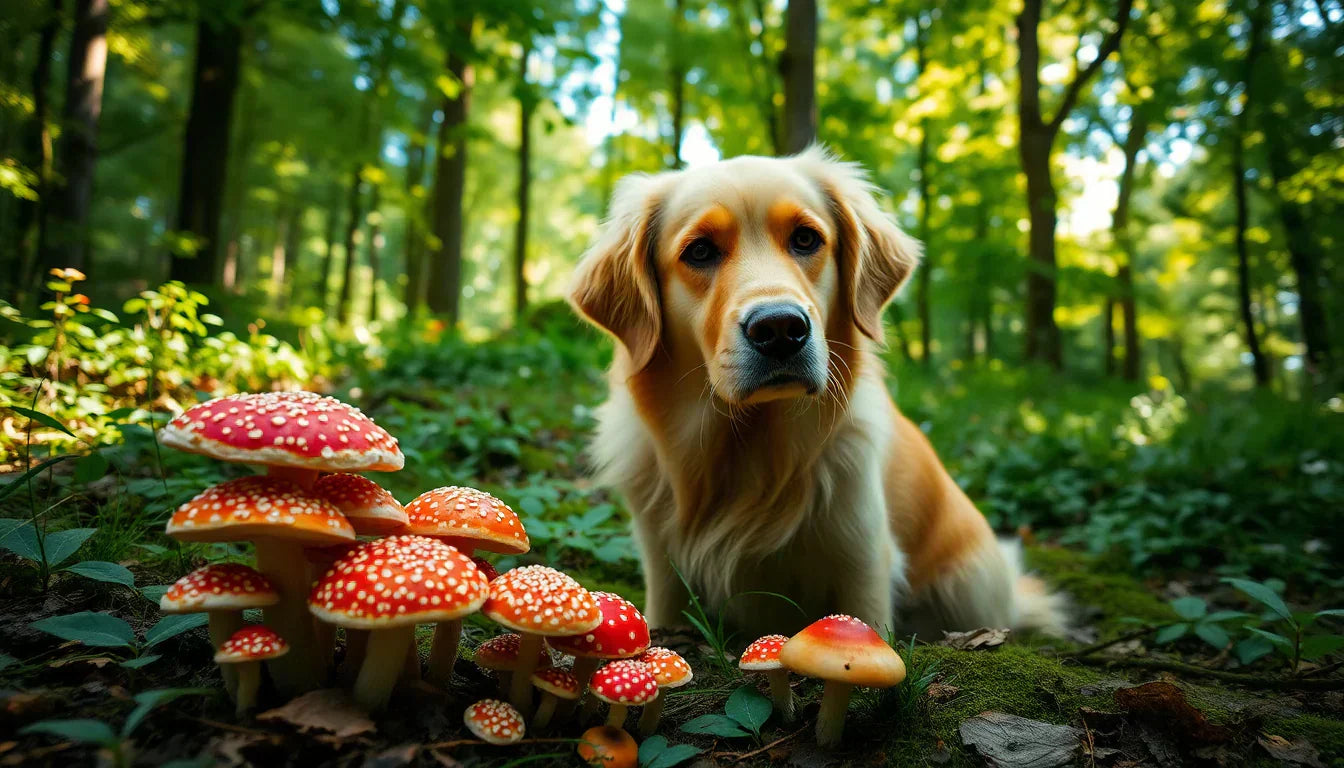
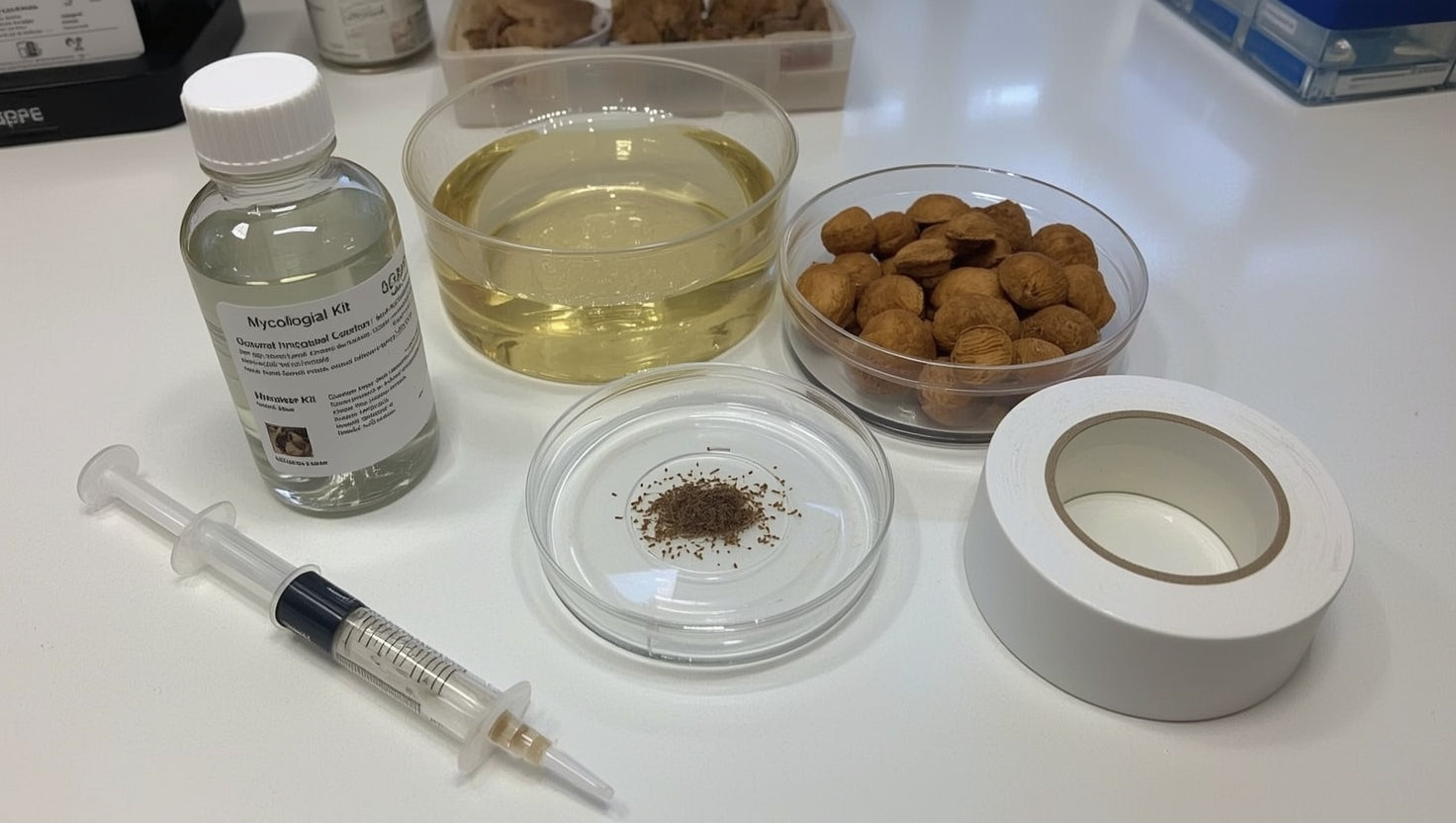
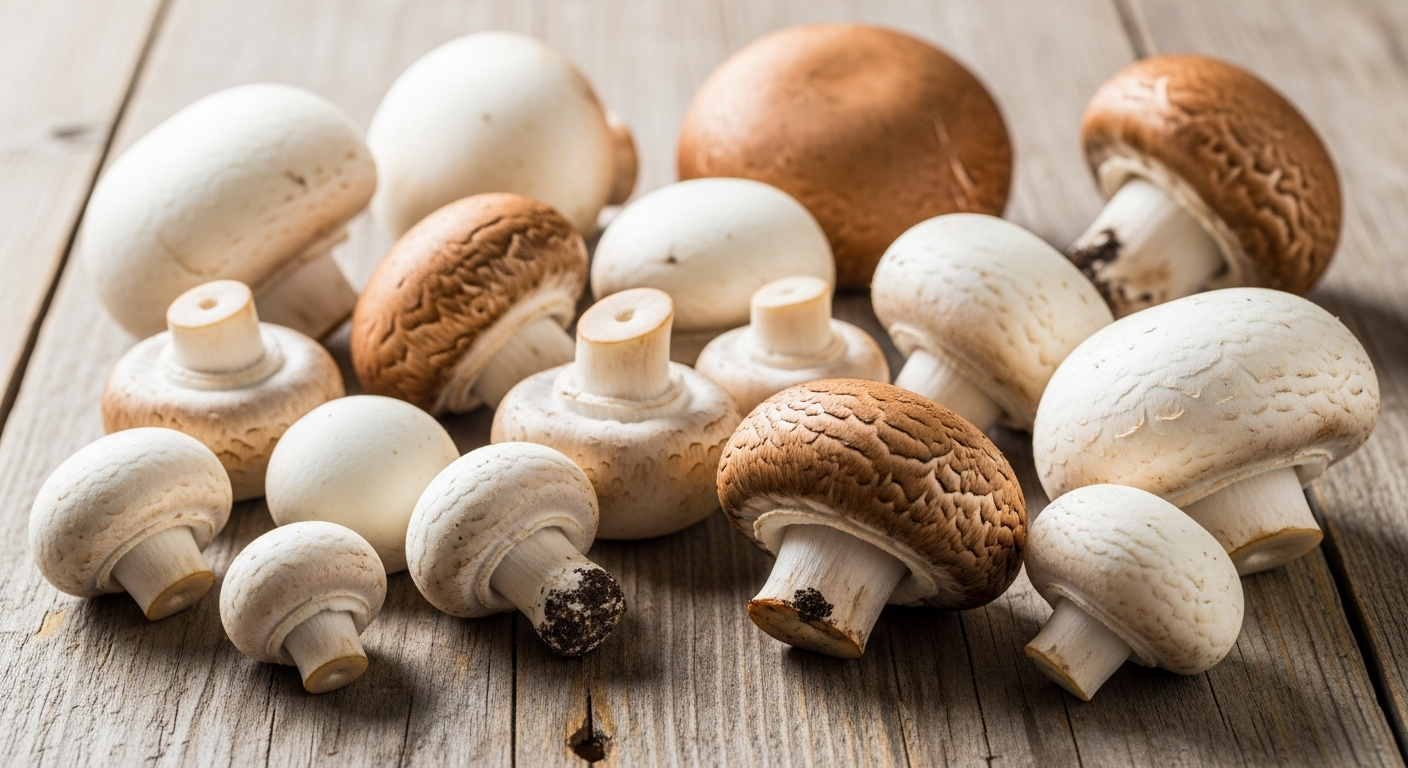
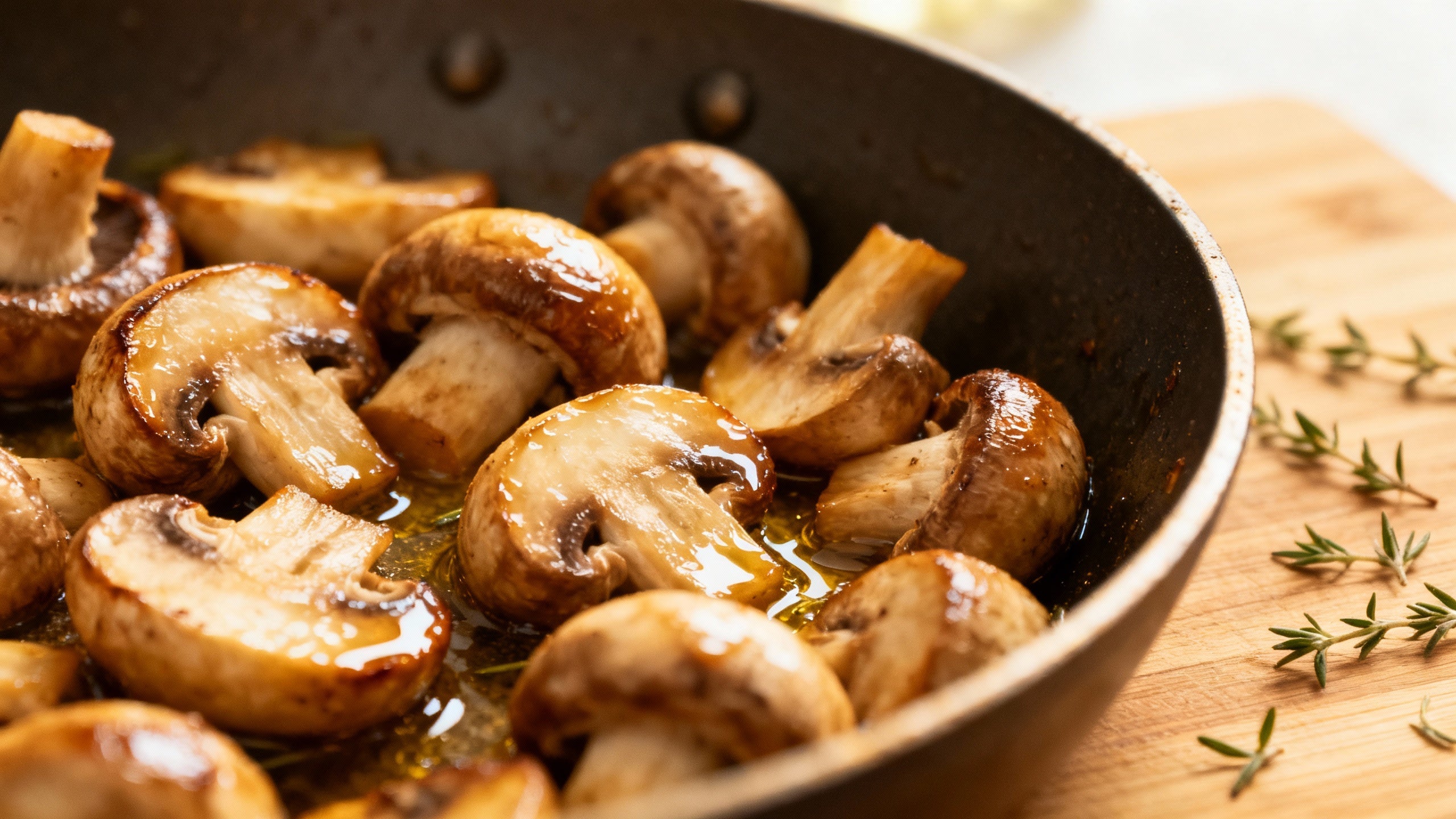
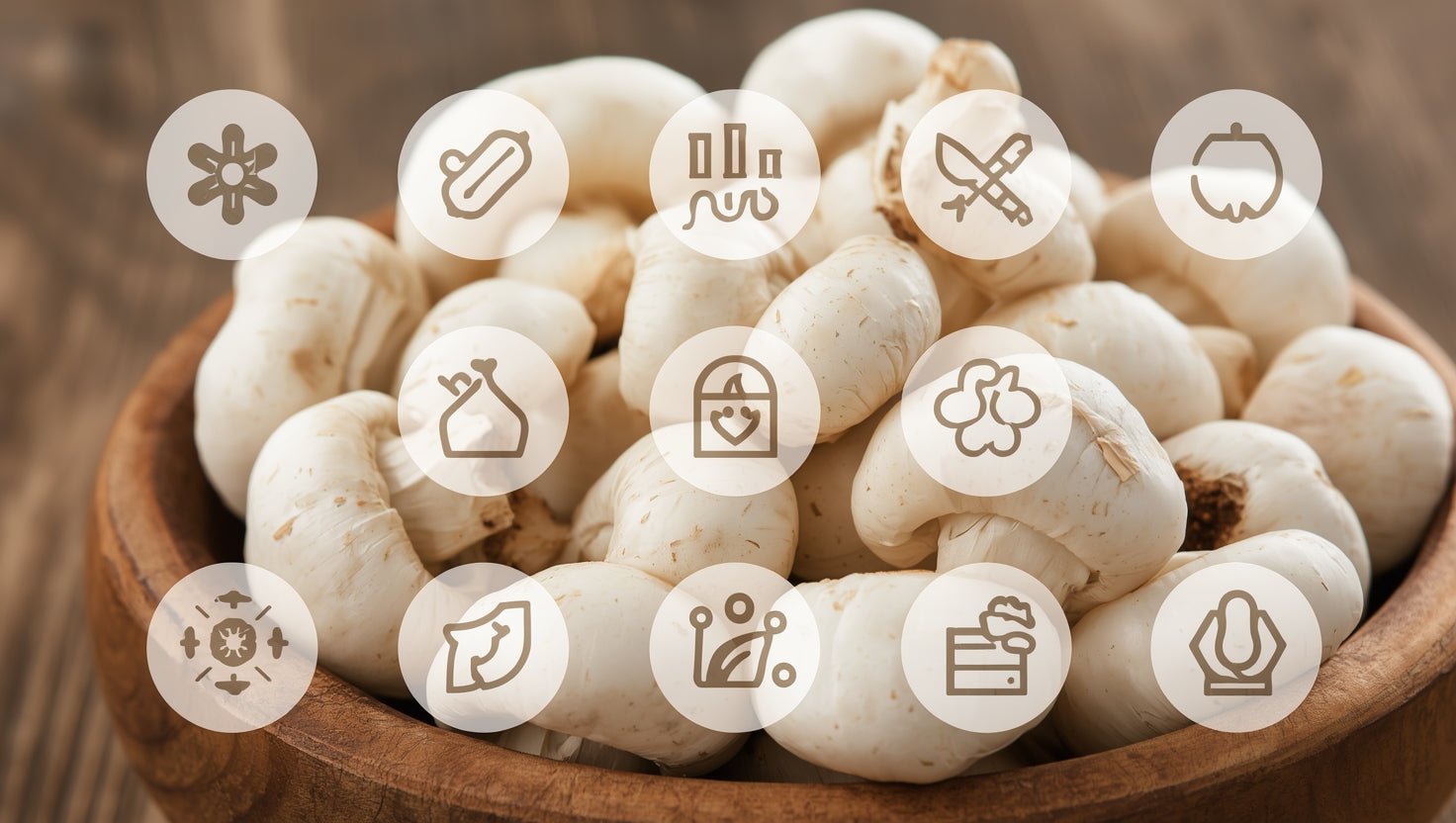

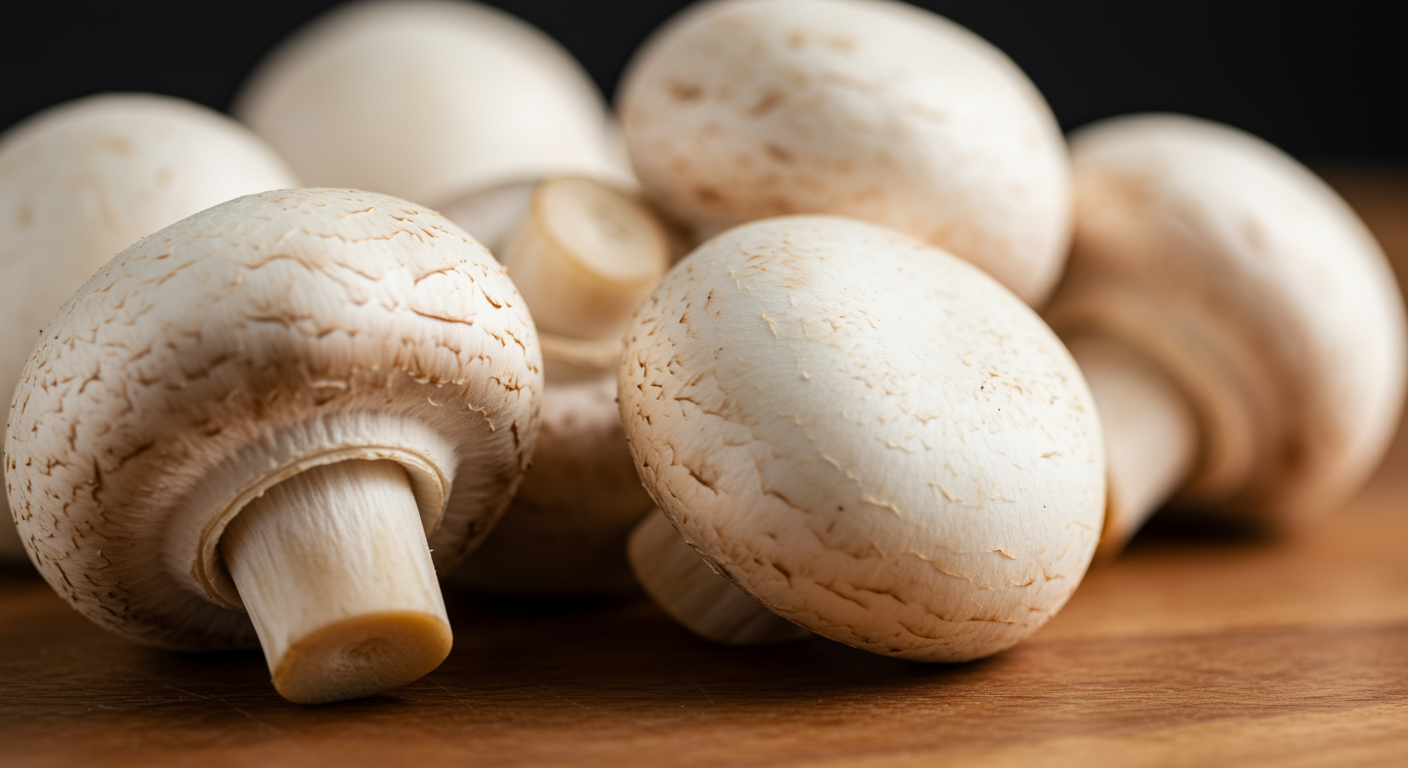
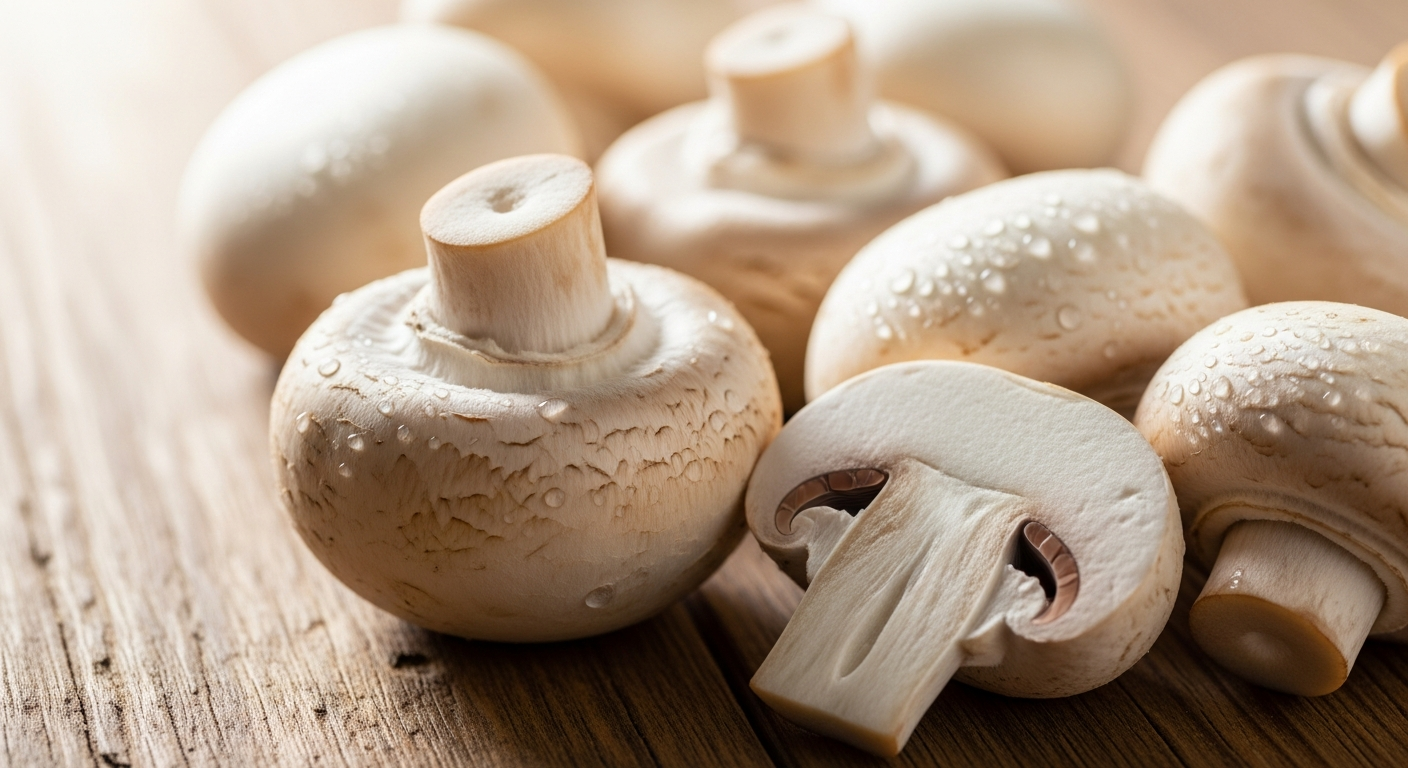
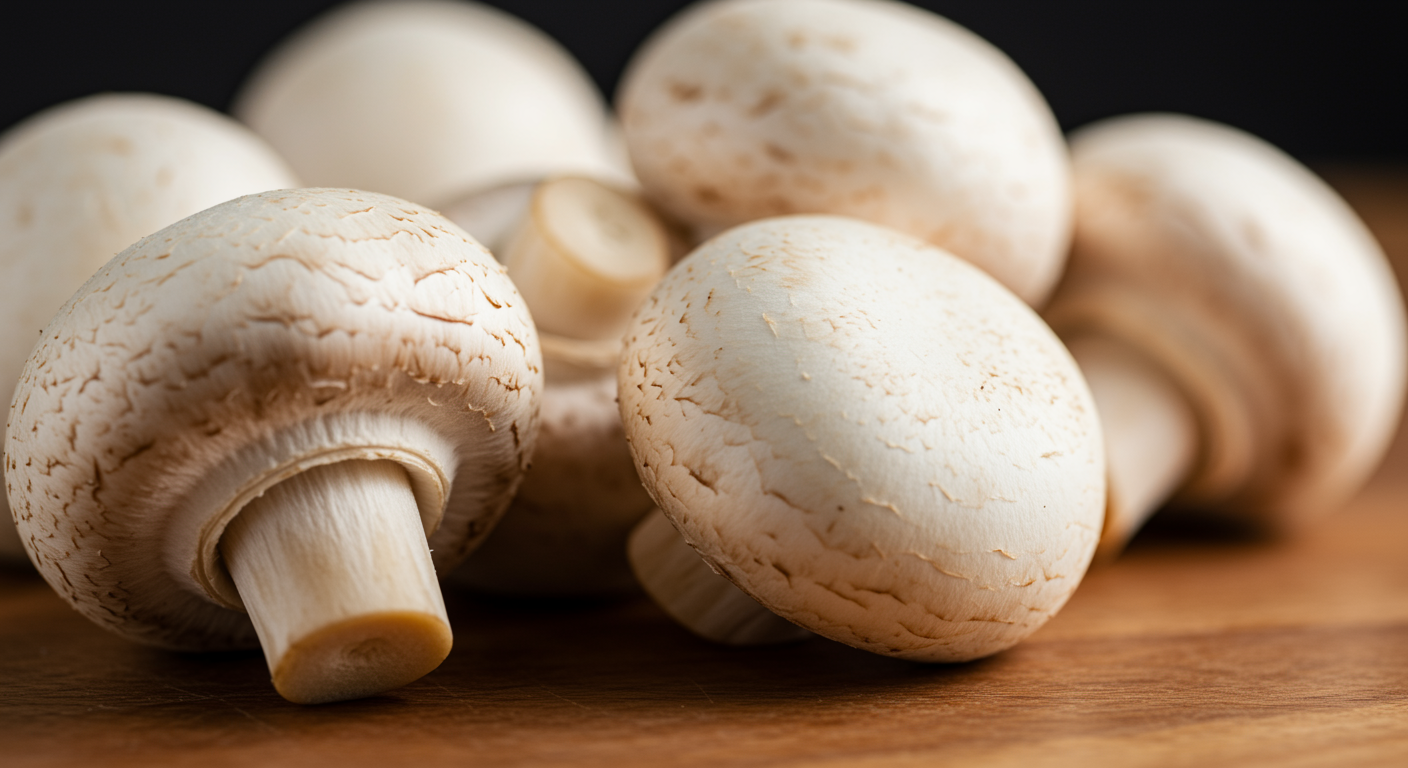
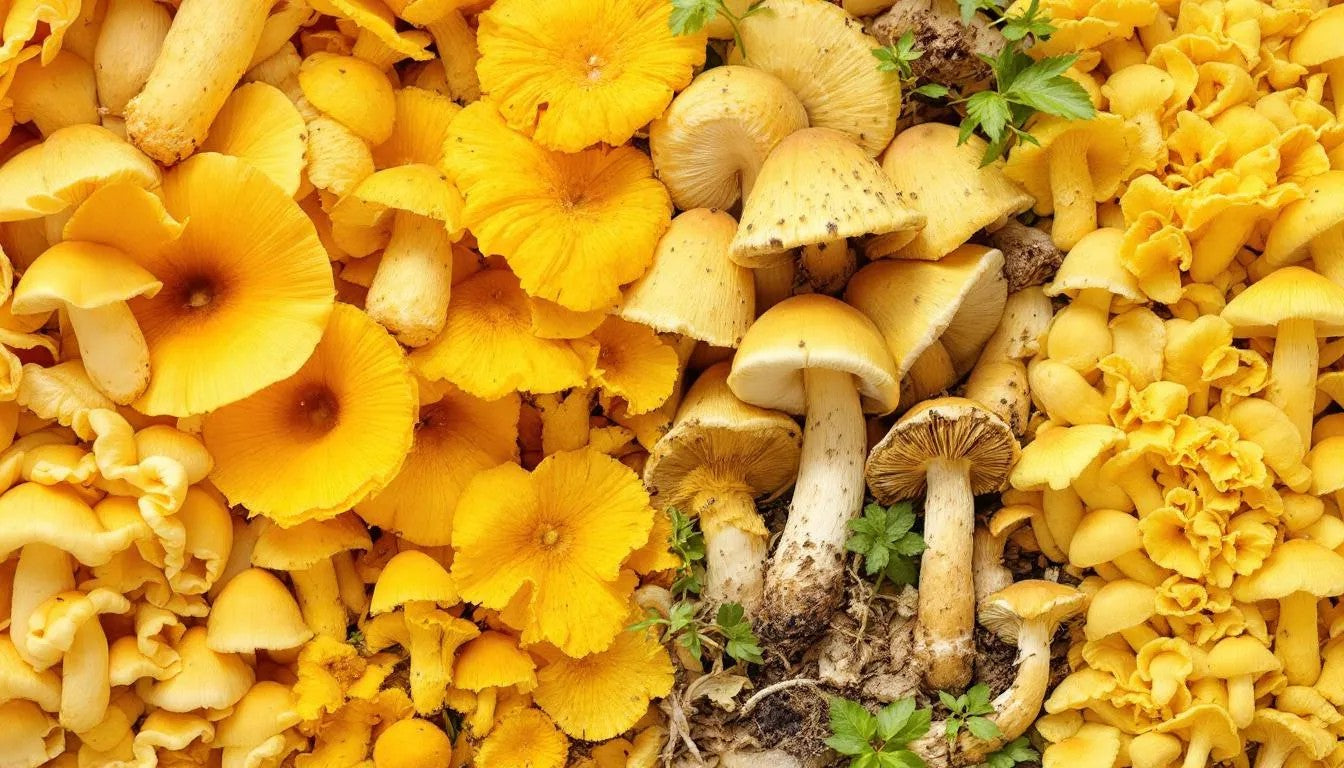

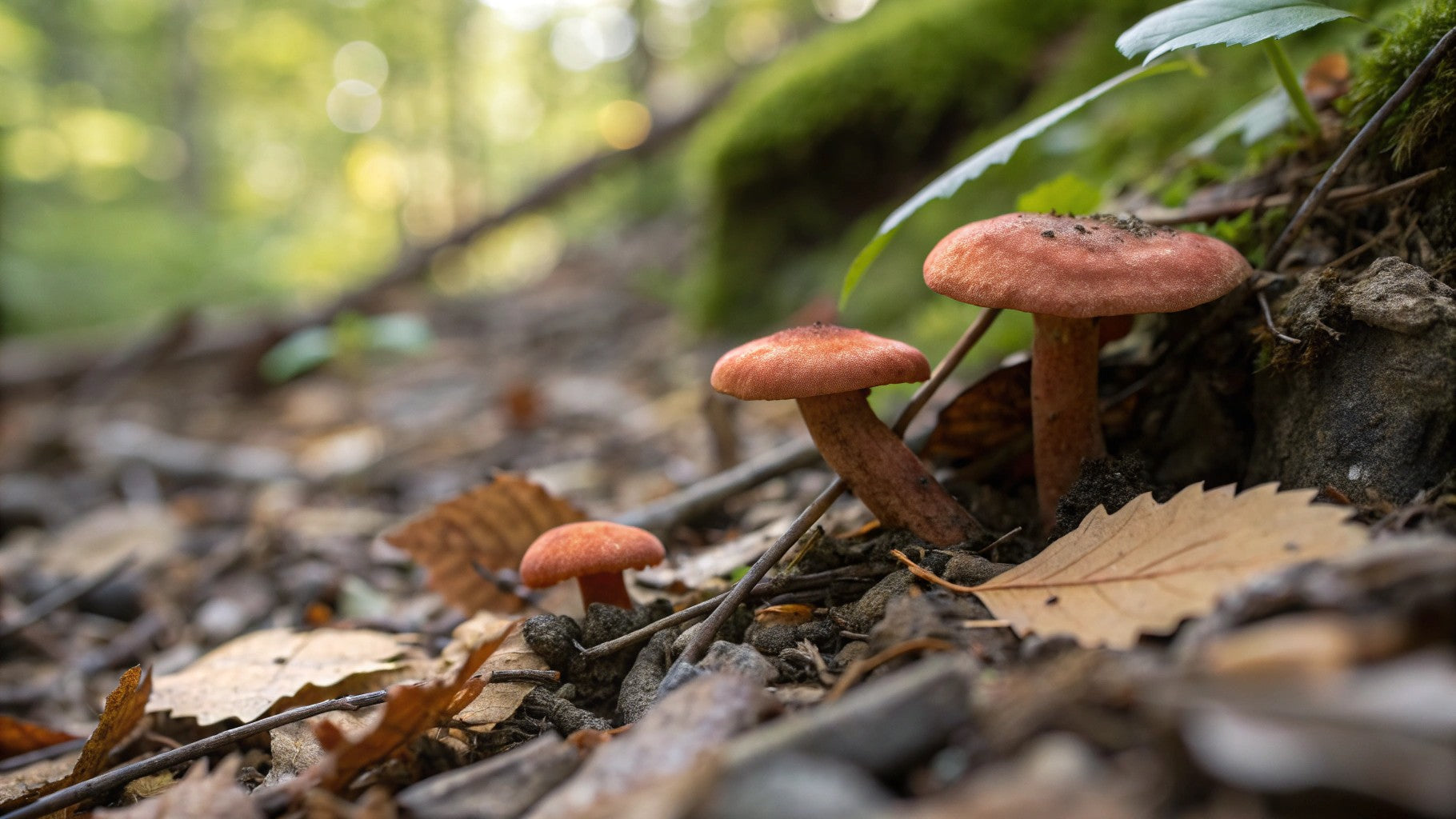

Share:
Chaga Mushroom: The Immune-Boosting Superstar
Enoki Mushroom: The Delicate Delight